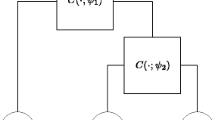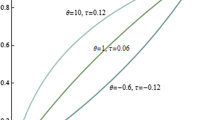Abstract
The copula is well-known for learning scale-free measures of dependence among variables and has invited much interest in recent years. At the very coronary heart of the copula, the concept is the well-known theorem of Sklar. It states that any multivariate distribution function can be disintegrated into the marginal distributions and a copula, which comprises the reliance between variables. On the other hand, the decision tree is a renowned nonparametric dominant modeling approach used for both regression and labeling problems. A decision tree represents a tree-structured classification of the data into surprising instructions for simplicity and prediction reason. In this paper, we are going to appraise with novel nonparametric copula-based decision tree organization using a measure of dependence: maximal information coefficient as classification index for two related variables which best classify the data concerning looking at the factors, but additionally ranked the factors in line with their inferences. Additionally, we pre-test the splitting criteria value to anticipate growing branches of the decision tree at each infant node. For example, we followed our proposed method to credit card records for Taiwan and coronary heart disease records of Pakistan and acquired the desirable outcomes. As a result, the anticipated method of initiating two-variable decision trees is tested using constructive tools for classification, prediction and reconnecting critical factors in statistics, finance, fitness sciences, machine learning, and many other associated fields.













Similar content being viewed by others
Code availability
All the results reported in this research are carried out in R-studio with the help of the "Kdecopula" and "Minerva" package.
References
Aitkenhead MJ (2008) A co-evolving decision tree classification method. Expert SystAppl 34(1):18–25
Alsagheer RHA, Alharan AFH, Al-Haboobi ASA (2017) Popular decision tree algorithms of data mining techniques: a review. Int J ComputSci Mobile Comput IJCSMC 6(6):133–142
Balakrishnan S, Madigan D (2006) Decision trees for functional variables. In: 6th international conference on data mining (ICDM'06), pp 798–802
Chen SX, Huang TM (2007) Nonparametric estimation of copula functions for dependence modelling. Can J Stat 35(2):145–159
Cherubini U, Luciano E, Vecchiato W (2004) Copula methods in finance. Wiley finance series. Wiley, London
Elidan G (2012) Copula network classifiers. In: Proceedings of the 15th international conference on artificial intelligence and statistics, PMLR, vol 22, pp 346–354
Elidan G (2013) Copulas in machine learning. In: Jaworski P, Durante F, Hardle WK (eds) Copulae in mathematical and quantitative finance, volume 213 of lecture notes in statistics. Springer, Berlin, pp 39–60
Filose M et al (2013) Minerva: maximal information-based nonparametric exploration R package for variable analysis version 1.3. https://www.rproject.org. https://mpba.fbk.eu/cmine
Geenens G, Charpentier A, Paindaveine D (2017) Probit transformation for nonparametric kernel estimation of the copula density. Bernoulli 23(3):1848–1873
Gijbels I, Mielniczuk J (1990) Estimating the density of a copula function. Commun Stat Theory Methods 19(2):445–464
Hastie T, Tibshirani R, Friedman JH (2009) The elements of statistical learning: data mining, Inference and Prediction. Springer, New York
Kinney JB, Gurinder SA (2014) Equitability, mutual information, and the maximal information coefficient. PNAS 111(9):3354–3359
Kraskov A, Stogbauer H, Grassberger P (2004) Estimating mutual information. Phys Rev E Stat Nonlin Soft Matter Phys 69(6 Pt 2):066138
Nagler T (2017) Kdecopula: an R package for the kernel estimation of bivariate copula densities. https://cran.r-project.org/web/packages/kdecopula/README.html
Nelsen RB (1997) An introduction to copulas. Springer, New York
Ozdemir O, Allen TG, Choi S, Wimalajeewa T, Varshney PK (2018) Copula based classifier fusion under statistical dependence. IEEE Trans Pattern Anal Mach Intell 40(11):2740–2748
Patel BN, Prajapati SG, Lakharia KI (2012) Efficient classification of data using decision tree. BunfInt J Data Min 2(1):6–12
Reshef DN et al (2011) Detecting novel associations in large data sets. Science 334(6062):1518–1524
Reshef DN, Reshef Y, Mitzenmacher M, Sabeti P (2013) Equitability analysis of the maximal information coefficients with comparisons. arXiv:1301.6314v1 [cs. L.G.]
Simon N, Tibshirani R (2011) Comment on "Detecting novel associations in large data sets" by Reshef et al. Science. arXiv:1401.7645
Sklar A (1959) Fonctions de Répartition à n Dimensions et Leurs Marges. Université Paris 8
Wang T, Dyer JS (2012) A copulas-based approach to modeling dependence in decision trees. Oper Res 60(1):1
Wang LM, Li XL, Cao CH, Yuan SM (2006) Combining decision tree and naïve Bayes for classification. Knowl Based Syst 19(7):511–515
Yeh IC, Lien CH (2009) The comparisons of data mining techniques for the predictive accuracy of the probability of default of credit card clients. Expert SystAppl 36(2):2473–2480
Acknowledgements
Any source has not supported this study organization.
Author information
Authors and Affiliations
Corresponding authors
Ethics declarations
Conflict of interest
All authors declare that they have no conflict of interest.
Ethical approval
This article does not contain any studies with human participants or animals performed by any of the authors.
Additional information
Publisher's Note
Springer Nature remains neutral with regard to jurisdictional claims in published maps and institutional affiliations.
Rights and permissions
About this article
Cite this article
Khan, Y.A., Shan, Q.S., Liu, Q. et al. A nonparametric copula-based decision tree for two random variables using MIC as a classification index. Soft Comput 25, 9677–9692 (2021). https://doi.org/10.1007/s00500-020-05399-1
Published:
Issue Date:
DOI: https://doi.org/10.1007/s00500-020-05399-1




